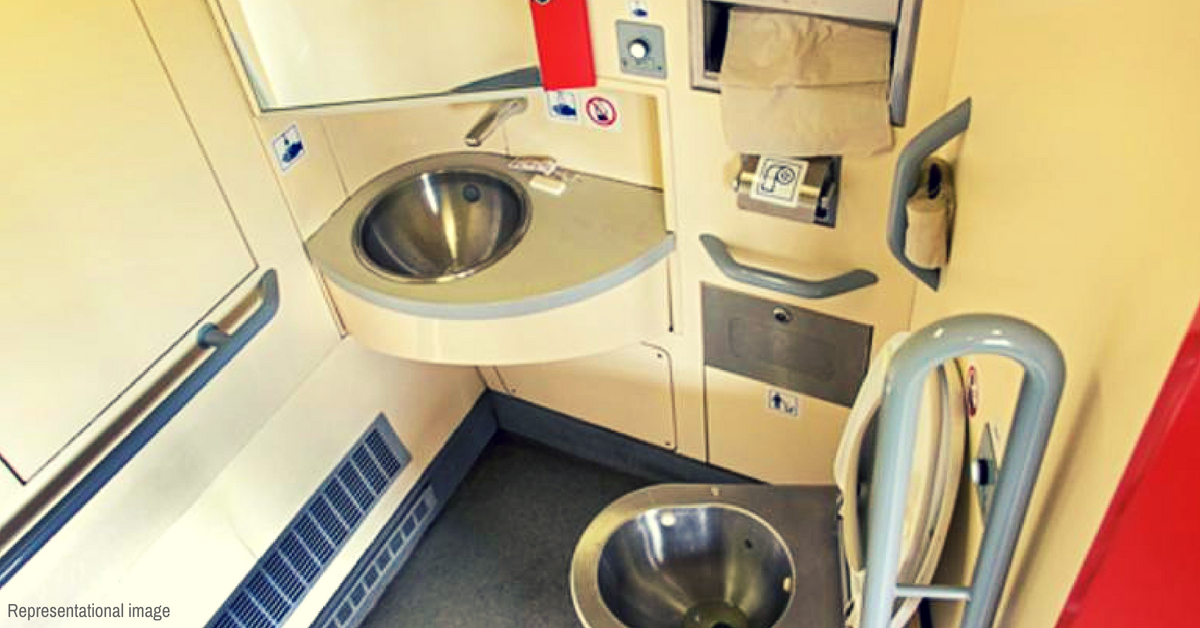Stinking toilets in long-distance trains making you reconsider your travel decision? Soon, these clogged and foul-smelling toilets may become obsolete.
When Indian Railways first began its experiment to help commuters by installing bio-toilets, it was met with criticism.
At first, these bio-toilets were lauded for converting human waste into water and bio-gas through anaerobic bacterial action and having a cross-ventilation system.
But with their installation a few years ago, frequent complaints of choking, foul smell and non-functional bio-toilets surfaced.
A major cause for these issues was considered to be the fact that these bio-toilets completely blocked the ventilation system in old trains which had an open commode chute.
To tackle this, the South East Central Railway (SECR) had invented the Natural Draft Induced Ventilation System (NDIVS).

According to an Economic Times report, the SECR won the first prize of Rs 3,00,000 in the Railways’ ‘Suggestion scheme of best innovation 2017-18’ category, and will soon be implemented in all zones.
The innovation was developed at the coaching depot in Bilaspur. The idea of the design is to remove humidity and bring in fresh air in the toilets with its cross-ventilation system. Deemed to be a cost-effective model, it was also studied by the Visvesvaraya National Institute of Technology (VNIT), Nagpur.
How is it different you ask?
The system has two funnels. One of which faces forward and the other, in the reverse direction of the train. These are connected to the coach toilet with the help of plastic pipes.
While the front-facing funnel takes in fresh air and pumps it into the toilet as the train moves, this fresh air pushes out the foul smell in the toilet through the reverse-facing funnel.
The mechanism is credited to the ‘venturi effect’ which ensures a vacuum is created at the mouth of the reverse-facing funnel, which helps purge out of the odour.
While the innovation has now been installed in 50 coaches, the report mentions that it will be implemented across the national carrier in the long run.
Read more: No More Dirty Tracks: Railways’ Bio-Toilets to Be Here Sooner Than You Think!
The transport giant was reported to explore the option of upgrading its bio-toilets to imported bio-vacuum toilets found in aircraft which would not only consume less water but also prevent erosion of rail tracks, as there would be no discharge.
It would be useful to note that a regular or bio-toilet consumes 10 to 15 litres of water per flush, while the vacuum toilet would consume only 500 ml of water.
The first 100 coaches were reported to be attached to premium trains like Rajdhani and Shatabdi and be rolled out in January 2018. Read more about it here
(Edited by Shruti Singhal)
Like this story? Or have something to share?
Write to us: contact@thebetterindia.com
Connect with us on Facebook and Twitter.
NEW: Click here to get positive news on WhatsApp!
If you found our stories insightful, informative, or even just enjoyable, we invite you to consider making a voluntary payment to support the work we do at The Better India. Your contribution helps us continue producing quality content that educates, inspires, and drives positive change.
Choose one of the payment options below for your contribution-
By paying for the stories you value, you directly contribute to sustaining our efforts focused on making a difference in the world. Together, let's ensure that impactful stories continue to be told and shared, enriching lives and communities alike.
Thank you for your support. Here are some frequently asked questions you might find helpful to know why you are contributing?
